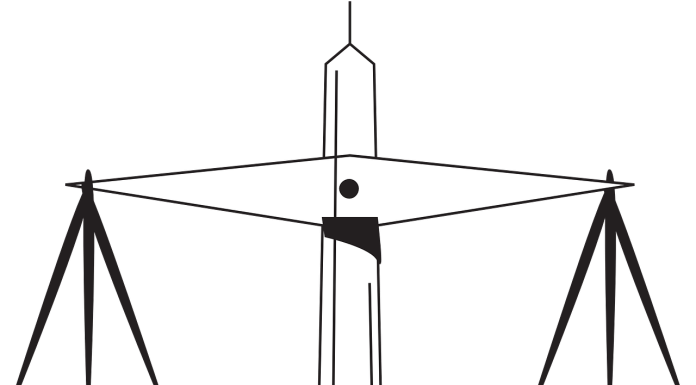The European Union has approved €8 billion in subsidies for chip research projects aimed at establishing Europe’s ambitions in semiconductor technology. Thereby it is however risking the precipitation of a trade war between the West and China, potentially leading to China ending the export of essential raw materials. The ongoing trade controls will have a negative downstream consequence on other industries as well, affecting wages, prices, sales, and investment.
Europe is following Biden’s economic planning, as the EU’s executive arm gave the green light to €8 billion in public funds towards semiconductor research projects. In total, more than €43 billion of policy-driven investment will support the Chips Act until 2030 and 68 Important Projects of Common European Interest (IPCEI) have been approved from 56 companies across the EU that will undertake the projects. Businesses like Intel Corp, Infineon Technologies AG, Taiwan Semiconductor Manufacturing Co.,GlobalFoundries Inc., and Wolfspeed Inc have all announced new investments. Indeed, at first glance, it looks like nothing but blue skies for the Worldwide Semiconductor Market, as a 11.9 per cent growth is predicted next year.
The American inspired EU Chips Act and subsidy plan seek to help the bloc compete with the U.S. and Asia on technology sectors, and establish control over a critical technology behind the world’s electronics products and devices. The subsidy handouts were soon followed by trade controls against China both from the EU and the U.S.
Matters have escalated since – the latest salvo in the Biden lead tech attack on China was an executive order issued in August banning AI, chip, and quantum system investments. This initiative has foundations in series of restrictions on US chip related export controls to China jeopardising the disruption of the global tech supply chain and market access for American firms, claims Biden’s letter to Congress. The special Administrative Region of Hong Kong and the Special Administrative Region of Macau, were also noted as countries of concern.
Preceding the American and European chips acts, in October 2022 the United States Bureau of Industry and Security disclosed a document expanding the trade blacklist known as the entity list, first compiled in 1997, with newer multilateral export-control agreements against China pertaining to advanced computing and semiconductor manufacturing items that are not necessarily of dual use. The B.I.S. is determined to marginalise China’s advanced technology niche – “not only are we not going to allow China to progress any further technologically, we are going to actively reverse their current state of the art,” says Gregory C. Allen, director of the Wadhwani Center for A.I. and Advanced Technologies at the Center for Strategic and International Studies in Washington.
Similar in nature, Europe passed more than a half dozen of measures, many of which are named in the European Economic Security Strategy paper (published June 2023) such as the Anti-Coercion Instrument (ACI) giving the EU access to a wide range of possible countermeasures against a coercing country, namely China. These include the imposition of tariffs, restrictions on trade in services, and restrictions on access to foreign direct investment or public procurement. A case in point, the Anti-Coercion Instrument permits the Commission to impose anti-dumping-like tariffs if a country, such as China, decides to prohibit all imports from an EU member, like Lithuania.
Europe’s economic strategy is billed as a team building activity, giving Europe the tools to partner with the U.S. in countering unfair trade practices from China and stopping the flow of advanced chips to Russia and other adversaries. However, when national security trumps economic freedom, there’s quite a bit of blow back.
Blocking China may put innovation at risk
Semiconductor-manufacturing plants, known as fabs, are the most expensive factories in the world and the chip industry is a network of interdependence in specialised areas – breakthroughs cost billions of dollars and decades of research.
Both Europe and the U.S. lack advanced and trailing-edge (several generations behind cutting-edge) logic fabs and have no foundries producing chips at process nodes under 22 nm. The European Union lacks chip making potential for semiconductors, and thus far results have been below par, with the decline of Nokia, Europe no longer has a major company like Qualcomm, Apple, or Samsung stimulating the creation of state of the art semiconductors.
EU and U.S. trade barriers may jeopardise raw material supply coming from China. Supply chains for critical minerals are dominated by China, namely materials for lithium batteries, also producing more than 95% of the world’s raw gallium, the metal used in making chipsets for electronic devices. While China does not directly produce most minerals (except for rare earths and graphite), the country dominates the processing of minerals, including the mineral processing for EV batteries. Amanda Lacaze, managing director of Lynas, the world’s largest non-Chinese miner, says “until we get a critical mass operating outside of China, China will retain that ability to pull the strings on the market”. Western suppliers have been exploiting China’s lower environmental regulations and cheaper labour for decades and now U.S.-EU are struggling for newer supply chains.
Sanctions against China come with repercussions- in August Beijing imposed export controls on gallium and germanium, rare elements essential for manufacturing semiconductors, in retaliation after the United States and Europe restricted chip exports to China.
Exporters of these raw materials will need to apply for “special permission from the state” to ship them out the country, the statement said. The EU and America need to act quickly, reducing the red tape in securing its raw materials domestically.
Will the EU’s attempts to reduce geostrategic dependencies on semiconductor production backfire?https://t.co/x1YZ4TB86R
— Pieter Cleppe (@pietercleppe) November 17, 2022
The EU’s Critical Minerals Agreement
The EU’s Critical Minerals Agreement may ease dependency on China, but not imminently. China only dominated the lowest rung of the supply chain because European and American reserves are not being mined due to constrained domestic regulations. But as of September, there is some movement in the right direction and dependence on Chinese essential minerals may be a thing of the past in a few years: the EU has voted to secure more of the critical materials needed to make solar panels, electric car batteries and other key elements of its green transition mid September 2023. The European Union’s proposing critical-minerals legislation will speed up mine approvals across the bloc with various measures, including easing environmental approval review times to two years.
The regulation also aims to “diversify the Union’s imports of strategic raw materials” ensuring that by 2030, the Union’s annual consumption of each raw material can be dependent on imports from multiple third countries”. The Union made concessions to increase its processing capacity aiming to produce at least 50 per cent annual consumption of critical raw materials.
Mines are opening up across Europe, but mineral processing technology is still lagging behind. Covas, Portugal, is set to play a role in the green-energy transition for it holds Europe’s richest lithium deposits—the silvery metal used in electric-vehicle batteries. Europe is scrambling to find new sources of critical materials—and in doing so it is easing the approval process that once took years to get off the ground.
The proposed Covas site is one of the nearly 50 mines now expected to open across Europe by 2030. In Germany, Vulcan Energy Resources is looking ahead to open a lithium mine. In Sweden, Copperstone Resources is likely to reopen a brownfield mine site, while Adriatic Metals has just started mining for silver and zinc in Bosnia, with more projects planned from Finland to Greece.
Currently, EU chip production and mineral production at both mining and processing levels are negligible. Mining has still not got off the ground to its full potential and there is no processing technology at work, only on an experimental level. Chips production still needs China, for now, and controls jeopardise the sector. Through its many trade agreements historically, Europe pushed down tariffs and advocated for rules-based trade around the globe. By keeping the single market and free trade at the heart of the enterprise, the economy reaped a 2 trillion dividend. Only time will tell if the semiconductor industry will continue to flourish with controls in place limiting China’s input.
🚨🇨🇳The geopolitics of critical raw materials
🇨🇳China has imposed export controls on graphite, a material used in EV batteries as🇨🇳hits back at🇺🇸US-led restrictions on technology sales to🇨🇳companies in a tit-for-tat which recalls export restrictions towards germanium and gallium. pic.twitter.com/KtM3gGoHrr— Francesco Sassi (@Frank_Stones) October 20, 2023
Disclaimer: www.BrusselsReport.eu will under no circumstance be held legally responsible or liable for the content of any article appearing on the website, as only the author of an article is legally responsible for that, also in accordance with the terms of use.













